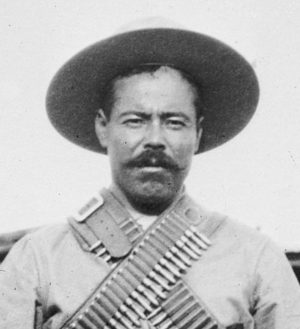Of the many political and military figures involved in Mexico’s 1910 Revolution, Pancho Villa remains the most famous and charismatic.
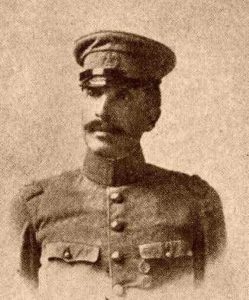
Villa formally requested that Felipe Angeles be permitted to officially join Villa’s military staff. Angeles was a traditional army officer with an expertise in artillery. He served during the Diaz government but was in France when the revolution broke out. Ultimately, he decided that the populist concepts of the revolution were more to his liking and felt Villa best embodied these ideas.
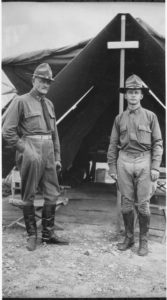
Public outrage over Villa’s Columbus, New Mexico attack prompted Woodrow Wilson to launch a rapidly deployed military expedition under the leadership of the commandant of Fort Bliss, Texas and experienced Apache antagonist, John “Black Jack” Pershing. Commanding six thousand men, split into two separate columns, Pershing crossed the border, without the permission or even cooperation of the Carranza government, which was sensitive to any American incursion. Fleeing south, Villa, attacked any appropriate smaller targets along the way but suffered a serious leg wound at Guerrero on March 28. Pershing’s force quickly located the Villistas and successfully attacked Guerrero but Villa escaped into the mountains where he hid for six weeks, recovering from his gunshot injury. Although Villa was no longer popular in Mexico, the American expedition was considered an invasion and an incident at Hidalgo Parral in which several American soldiers and numerous Mexicans were killed prompted an agreement between the two governments that the Pershing expedition would gradually withdraw
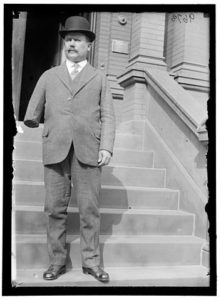
Although at the height of his military effectiveness and power, Pancho Villa was now confronted with fundamental logistical issues. Although the path to the capital was wide open, Carranza ordered the cut off of any resupply, especially of coal which limited the rebel general’s railway mobility. Foreign hostility caught up to Villa personally when the Wilson administration tailored an arms embargo designed specifically for the Villistas. Any attempt to patch up an agreement between Carranza and Villa failed and it became clear that Pancho would never make it to Mexico City before another general, loyal to Carranza, Alvaro Obregon. Obregon, approaching initially from the western state of Jalisco, marched unopposed into Mexico City on August 18, 1914. Carranza joined him two days later. Villa had no choice but to retreat northward back to the state of Chihuahua to regroup, resupply and recruit more soldiers.
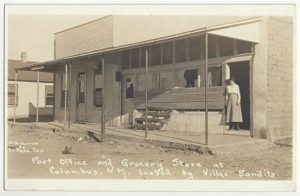
On January 19, 1916 a group of Villistas stopped a train heading to Chihuahua City, from the United States. They executed 17 American employees, an act that outraged US citizens living in the towns on the Mexican border. Although Villa denied involvement, officially the Carranza government apologized to the Wilson administration and vowed to bring the murderers and Villa to justice. One of the formerly most powerful political forces in Mexico was now a mere criminal. Villa’s response was even more audacious. He proceeded to cross the border near the tiny and isolated town of Columbus, New Mexico. At one in the morning, a firefight broke out between the Villistas and the US soldiers stationed in the town. The Mexican rebels looted the local general store and destroyed a hotel but after some initial confusion, US cavalry and even local townspeople organized a response that drove the invaders out of the town. As dawn broke, the cavalry chased Villa fifteen miles into Mexico before breaking off the counterattack. The Columbus attack killed eight soldiers and ten civilians and wounded several others. Although he was able to seize some nominal amounts of weapons and livestock, Villa never even explained much less justified this wanton and foolhardy provocation.
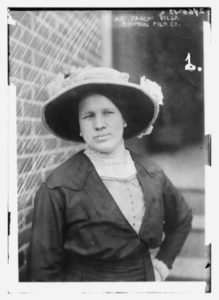
One wife, Luz Corral, who he married legally in 1911, was recognized by Mexican courts as his heir, but two other women who claimed to be married to him were eventually granted government pensions acknowledging their claim. Officially, Villa had five children but most likely, considering his reputation as a ladies man, there were many more.
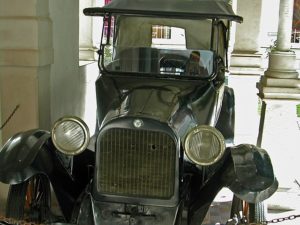
Amidst this atmosphere, life went on at Villa’s hacienda. On July 20, 1923 he was returning to Canutillo in a large Dodge automobile, with cash he picked up in Parral for his employees. An aide had recently cautioned him about the expense incurred by a huge entourage accompanying him on his trips to the city. In response, Villa limited his latest bodyguard to five additional individuals crammed into his car. With Villa at the wheel, the Dodge made its way slowly through the streets of Parral. When it reached an intersection that required a turn, a street vendor began shouting Viva Villa, the general’s former rallying cry but on this day a signal to seven assassins who quickly stepped into the street with high powered rifles. They fired over forty rounds of hollow point bullets, nine hitting Villa and killing him instantly. Only one member of the entourage survived.
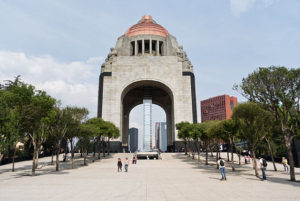
Over time, Francisco “Pancho” Villa has assumed a larger than life profile in Mexican popular culture. His stature increased to the extent that in 1976, his remains were transferred from Parral to the massive national mausoleum in Mexico City, El Monumento a la Revolucion where he joined such luminaries as Madero and Carranza. In life, Villa was feared and reviled as a volatile killer, bandit and criminal. Today he enjoys widespread international status as a proud nationalist revolutionary and a man of the people long after most of his adversaries and contemporaries have been completely forgotten.
Podcast: Play in new window | Download
Subscribe: RSS

